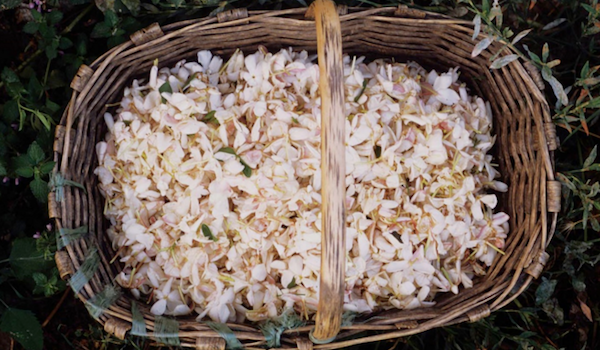
HEAVEN SCENT
It's British Flower Week, and here at Selvedge we're celebrating the close connections between all things floral and fabric by looking back at Marina Geigert's article on that ever-present relationship...

For almost 100 years, perfume has been closely linked to fashion. It is said that the first couturier to launch a perfume was Paul Poiret, who in 1911 established Parfums de Rosine. The connection between couture and perfume was solidified in the ensuing decades with the creation of couture perfume brands like Chanel, Christian Dior, Lanvin and Patou. These days, one is hard pressed to name a designer who has not attempted to put his or her name on a bottle of perfume.

The history of fragrance in the 20th century follows the same model as fashion: from exclusivity, high price and made-to-measure quality to the focus on middle market, mass production and democratisation. Fashion houses' keen interest in perfume is understandable. A successful fragrance line brings more profits to a brand than its couture creations, and often ‘funds’ the latter. In this mass-market era, not many perfumes can be considered ‘haute couture’ or rather, ‘haute parfumerie’. These creations are expressions of a designer's imagination unrestrained by economic considerations or usability.
Made of the finest materials, unique and at times downright bizarre – this is haute parfumerie; where the trends originate in their purest, unrepressed, original form. From there they will be translated into high street fashion, they will be adapted to a contemporary lifestyle, tamed and made wearable. Innovative scents that started trends and launched endless imitations are Chanel No 5, with its legendary overdose of aldehydes, and Angel by Thierry Mugler…

To read this article in full, order your copy of Selvedge issue 24 here.
Photography by Noelle Hoeppe
